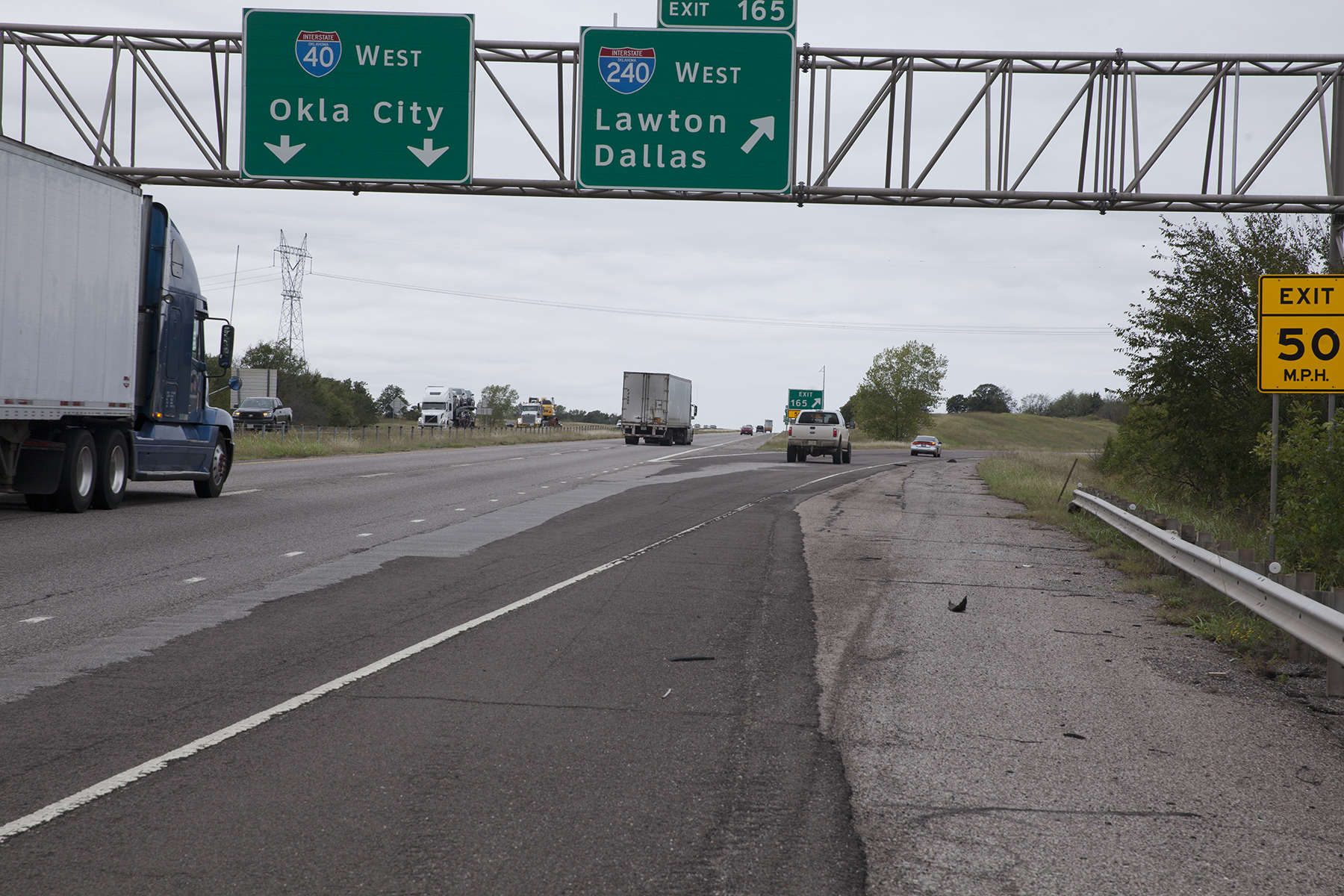Commission approves trimmed down ODOT Eight-year Plan; projects delayed, removed
FOR IMMEDIATE RELEASE
October 2, 2017
PR# 17-030
Progress made on the state’s transportation system, especially bridges, after decades of deferred infrastructure improvements is expected to slow considerably due to reductions in available state funding since 2010. The Oklahoma Transportation Commission voted on Oct. 2 to approve the Oklahoma Department of Transportation’s rebalanced Eight-year Construction Work Plan which includes the agency’s planned highway and bridge projects for Federal Fiscal Years 2018-2025.
Because the fiscally constrained plan must be balanced with anticipated state and federal funding, ODOT was forced to delay projects and even take the unprecedented action of removing projects from the plan due to $840 million in cumulative state funding reductions in the last seven years. The Asset Preservation Plan for State Fiscal Years 2018-2021 was also presented as a companion to the Eight-year Plan, as in each year.
“It was very challenging and frustrating to rebalance the Eight-year Plan while keeping our commitment on structurally deficient bridges and trying to address pavement conditions and urban highway congestion,” Executive Director Mike Patterson said. “The cumulative state funding reductions since 2010 have produced a snowball effect where projects have been pushed back later and later and now they’re being pushed out of the plan, which changes our strategy and moves us in the wrong direction.”
Overall, 40 construction projects totaling more than $204 million were removed from the updated Eight-year Plan and about 42 percent of all programmed projects are being delayed at least one year, including 65 projects that were originally scheduled to go to bid this year. Additionally, several projects have been significantly reduced in scope in order to stretch funding as far as possible.
The FFY 2018-2025 Eight-year Plan includes:
- $6.3 billion in federal and state transportation funding
- 1,448 total projects (nearly 170 fewer than the previous plan)
- 764 highway bridge replacements or major rehabilitations (60 fewer than the previous plan)
- Only 15 bridges were added, compared to 44 in the previous plan
- 696 miles of added shoulders or other improvements to two-lane highways (55 fewer miles)
- Nearly 150 miles of interstate pavement improvements
- Nearly $370 million in projects to address urban highway congestion
Examples of previously-scheduled projects that have been removed from the new plan include work as part of realignment of US-70 around Madill and $32 million replacement of the US-60 bridges over the Neosho and Spring rivers in Ottawa County. Delayed rural projects include reconstruction and widening of US-270 near Mutual in Woodward County, which was delayed from FFY 2018 to 2019. In Oklahoma’s urban areas, reconstruction of US-75 along the east leg of the Inner Dispersal Loop in downtown Tulsa and I-40 interchange reconstruction and widening at Douglas Blvd. in Midwest City were delayed two years and five years, respectively.
Project delays ultimately cost Oklahoma taxpayers in increased maintenance necessary to preserve highways and bridges and higher construction costs, which are up 67 percent nationally since 2003. In addition to direct financial costs, Oklahomans also will spend more time stuck in traffic congestion and face rougher roads.
While the plan’s top priority remains replacing or rehabilitating Oklahoma’s existing structurally deficient highway bridges by the end of the decade, it falls short on other major needs including improving pavement conditions, adding shoulders to two-lane highways and addressing growing urban highway congestion. Even as the state nears its decade-old goal to address all remaining structurally deficient highway bridges by 2020, ODOT estimates that 90 bridges will still have to be replaced or rehabilitated each year just to keep up with the aging infrastructure system. Only 15 bridges were added to this Eight-year Plan.
The Asset Preservation Plan contains preventative maintenance projects designed to extend the life of transportation infrastructure. The more than $473 million plan has nearly 400 projects addressing 147 bridges and more than 1,200 miles of pavement. The plan also features 44 projects to improve highways to Americans with Disabilities Act standards with curb ramps, traffic signal push buttons for pedestrians, crosswalks and sidewalks.
Since being first implemented in its current format in 2003, ODOT’s Eight-year Plan has focused on addressing the state’s greatest transportation needs in a transparent, accountable and businesslike manner without political influence. These infrastructure improvements have been linked directly to economic growth. The project selection process is very rigorous, as transportation commissioners work with ODOT’s field division engineers and staff to identify the most critical highway and bridge projects and create a balanced statewide plan with anticipated federal and state funding. Each year, the plan is updated to reflect project completions, adjustments in projected revenue and changes in construction costs. As the previous fiscal year comes off of the plan, another year is added based on forecasting of available funding. Funding comes from state income tax allocation and state motor fuel tax appropriation, as well as the federal Highway Trust Fund.
A full list and map of highway projects in ODOT’s Eight-year Construction Work Plan and Asset Preservation Plan can be viewed at www.odot.org under Programs and Projects.
Planned realignment of US-70 was around Madill, pictured here, was removed from the Oklahoma Department of Transportation’s Federal Fiscal Year 2018-2025 Eight-year Construction Work Plan.
Projects to reconstruct the I-40 interchange at Douglas Blvd. and widen I-40 to the I-240 junction, pictured here, were delayed from Federal Fiscal Year 2020 to 2025.
(Editors and News Directors: For more information, call the ODOT Media and Public Relations Division at 405-521-6000.)




